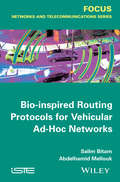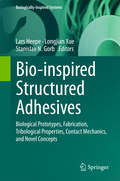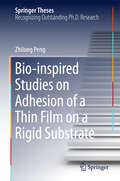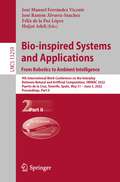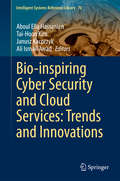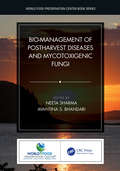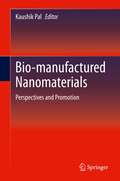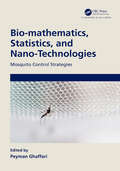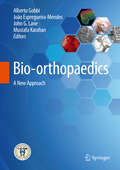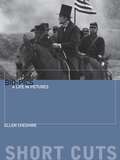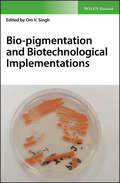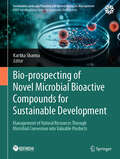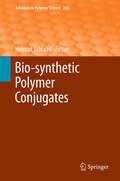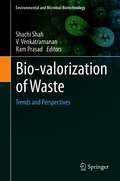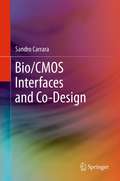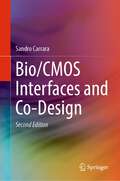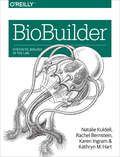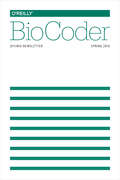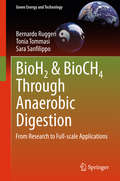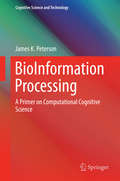- Table View
- List View
Bio-inspired Routing Protocols for Vehicular Ad-Hoc Networks
by Abdelhamid Mellouk Salim BitamVehicular Ad-Hoc Networks (VANETs) play a key role to develop Intelligent Transportation Systems (ITS) aiming to achieve road safety and to guaranty needs of drivers and passengers, in addition to improve the transportation productivity. One of the most important challenges of this kind of networks is the data routing between VANET nodes which should be routed with high level of Quality of Service (QoS) to ensure receiving messages in the time. Then, the driver can take the appropriate decision to improve the road safety. In the literature, there are several routing protocols for VANETs which are more or less reliable to reach safety requirements. In this book, we start by describing all VANET basic concepts such as VANET definition, VANET versus Mobile ad-Hoc Network (MANET), architectures, routing definition and steps, Quality of Service (QoS) for VANET Routing, Metrics of evaluation, Experimentation, and simulation of VANETs, mobility patterns of VANET etc. Moreover, different routing protocols for routing in VANETs will be described. We propose two main categories to be presented: classical routing and bio-inspired routing. Concerning classical VANET, main principles and all phases will be overviewed, as well as, their two sub-categories which are topological and geographical protocols. After that, we propose a new category called bio-inspired routing which is inspired by natural phenomenon such as Ant colony, Bee life, Genetic operators etc. We present also, some referential protocols as example of each category. In this book, we focus on the idea of how to apply bio-inspired principle into VANET routing to improve road safety, and to ensure QoS of vehicular applications.
Bio-inspired Structured Adhesives: Biological Prototypes, Fabrication, Tribological Properties, Contact Mechanics, and Novel Concepts (Biologically-Inspired Systems #9)
by Stanislav N. Gorb Lars Heepe Longjian XueThis book deals with the adhesion, friction and contact mechanics of living organisms. Further, it presents the remarkable adhesive abilities of the living organisms which inspired the design of novel micro- and nanostructured adhesives that can be used in various applications, such as climbing robots, reusable tapes, and biomedical bandages. The technologies for both the synthesis and construction of bio-inspired adhesive micro- and nanostructures, as well as their performance, are discussed in detail. Representatives of several animal groups, such as insects, spiders, tree frogs, and lizards, are able to walk on (and therefore attach to) tilted, vertical surfaces, and even ceilings in different environments. Studies have demonstrated that their highly specialized micro- and nanostructures, in combination with particular surface chemistries, are responsible for this impressive and reversible adhesion. These structures can maximize the formation of large effective contact areas on surfaces of varying roughness and chemical composition under different environmental conditions.
Bio-inspired Studies on Adhesion of a Thin Film on a Rigid Substrate (Springer Theses)
by Zhilong PengThe thesis systematically investigates the factors which influence many animals' robust adhesion abilities and micro-reversible adhesion mechanisms, including the geometric principles of their adhesion, relative humidity, surface roughness and pre-tension. Studies exploring biological adhesion mechanisms are not only of great significance for the design of advanced adhesive materials and adhesion systems for micro-climbing robots, but also very helpful for resolving the problem of adhesion failure in MEMS/NEMS.
Bio-inspired Systems and Applications: 9th International Work-Conference on the Interplay Between Natural and Artificial Computation, IWINAC 2022, Puerto de la Cruz, Tenerife, Spain, May 31 – June 3, 2022, Proceedings, Part II (Lecture Notes in Computer Science #13259)
by Hojjat Adeli José Manuel Ferrández Vicente José Ramón Álvarez-Sánchez Félix de la Paz LópezThe two volume set LNCS 13258 and 13259 constitutes the proceedings of the International Work-Conference on the Interplay Between Natural and Artificial Computation, IWINAC 2022, held in Puerto de la Cruz, Tenerife, Spain in May – June 2022. The total of 121 contributions was carefully reviewed and selected from 203 submissions. The papers are organized in two volumes, with the following topical sub-headings: Part I: Machine Learning in Neuroscience; Neuromotor and Cognitive Disorders; Affective Analysis; Health Applications Part II: Affective Computing in Ambient Intelligence; Bioinspired Computing Approaches; Machine Learning in Computer Vision and Robot; Deep Learning; Artificial Intelligence Applications.
Bio-inspiring Cyber Security and Cloud Services: Trends And Innovations (Intelligent Systems Reference Library #70)
by Janusz Kacprzyk Aboul Ella Hassanien Tai-Hoon Kim Ali Ismail AwadThis volume presents recent research in cyber security and reports how organizations can gain competitive advantages by applying the different security techniques in real-world scenarios. The volume provides reviews of cutting-edge technologies, algorithms, applications and insights for bio-inspiring cyber security-based systems. The book will be a valuable companion and comprehensive reference for both postgraduate and senior undergraduate students who are taking a course in cyber security. The volume is organized in self-contained chapters to provide greatest reading flexibility.
Bio-management of Postharvest Diseases and Mycotoxigenic Fungi (World Food Preservation Center Book Series)
by Neeta Sharma and Avantina S. BhandariThere is an ever-increasing demand for more food but one of the stumbling blocks to achieving this goal is quality and quantity losses due to various pests and pathogens and the mycotoxins synthesized by these harmful biotic entities. Thus far, strategies employed to manage these post-harvest diseases and mycotoxins decontamination include established physical, cultural, and chemical methods. Recently, the application of chemicals to reduce decay and deterioration caused by various pathogens has been impeded as these hazardous chemicals contaminate the environment, enter the food chain, and destroy beneficial microorganisms and pests by aiming at non-target microorganisms. In light of this, the usage of eco-friendly and non-polluting alternatives to chemical pesticides is the call of the hour. Bio-management of Postharvest Diseases and Mycotoxigenic Fungi deals with the current state and future prospects of using various bio-management techniques that are natural, eco-friendly, and environmentally safe. It aims to increase awareness of their potential as well as sensitizing readers to the various aspects of biologicals in pest control. Key Features: Highlights classical versus new techniques adopted to manage postharvest diseases Discusses novel approaches in managing fungal spoilage and mycotoxin decontamination Provides readers with a 360-degree perspective of the pre- and post-harvest quality mycotoxin decontamination research being conducted Details proposals of new ideas to ensure a food secure and pesticide-free world This book disseminates notable and diversified scientific work carried out by leading experts in their own field. Written by qualified scientists in each of their respective disciplines, it can serve as a current and comprehensive treatise on the emerging field of bio-management of postharvest diseases and mycotoxin decontamination by products that are "generally regarded as safe."
Bio-manufactured Nanomaterials: Perspectives and Promotion
by Kaushik PalThis book is based on the principles, limitations, challenges, improvements and applications of nanotechnology in medical science as described in the literature. It highlights various parameters affecting the synthesis of bio-nanomaterials and exclusive techniques utilized for characterizing the nanostructures for their potential use in biomedical and environmental applications. Moreover, biodegradable synthesis of nanomaterials is regarded as an important tool to reduce the destructive effects associated with the traditional methods of synthesis for nanostructures commonly utilized in laboratory and industry and as well as academic scale of innovative research foundation.
Bio-mathematics, Statistics, and Nano-Technologies: Mosquito Control Strategies
by Peyman GhaffariFinding effective methods for mosquito control remains one of the great global challenges facing this generation. Bio-mathematics, Statistics and Nano-Technologies: Mosquito Control Strategies brings together experts from a large array of disciplines in order to provide a comprehensive overview of cutting-edge techniques to model, analyse and combat mosquito-transmitted vector-borne diseases. Features Includes multiple case studies Suitable for scientists and professionals working on methods for mosquito control and Epidemiology Provide a much-needed focal point for interdisciplinary discussion
Bio-orthopaedics: A New Approach
by Mustafa Karahan Alberto Gobbi João Espregueira-Mendes John G. LaneThis book introduces the exciting field of orthobiology, which will usher in a new array of therapeutic approaches that stimulate the body's natural resources to regenerate musculoskeletal tissues damaged by trauma or disease. The book addresses a range of key topics and discusses emerging approaches that promise to offer effective alternatives to traditional treatments for injuries to bone, cartilage, muscles, ligaments, and tendons. It explains in detail how a variety of innovative products, including biomaterials, growth factors, and autogenous cells, together provide the basis for the regeneration of these musculoskeletal structures and how recent scientific progress has created unique opportunities to address pathological situations that until recently have been treated with unsatisfactory results. The authors are experts from across the world who come together to provide a truly global overview. The book is published in collaboration with ISAKOS. It will be invaluable for all with an interest in this area of medicine, which has already attained huge popularity in Orthopaedics and Sports Medicine and has also attracted the attention of the lay public.
Bio-pics
by Ellen CheshireThrough a carefully selected range of thematically linked bio-pics, explores key issues surrounding their resurgence, structure, production, subject representation or misrepresentation, and critical response
Bio-pics: A Life in Pictures
by Ellen CheshireThrough a carefully selected range of thematically linked bio-pics, explores key issues surrounding their resurgence, structure, production, subject representation or misrepresentation, and critical response
Bio-pics: A Life in Pictures (Short Cuts)
by Ellen CheshireBio-pics: A Life in Pictures offers a series of case studies which throw light on this most unique of genres. Is the bio-pic a genre in its own right? Or are such films merely footnotes in other more traditional genres such as the western or costume drama, depending on the historical figure under scrutiny. Unlike other genre forms bio-pics seemingly share no familiar iconography, codes or conventions. They can be set anywhere and at any time. What links them is quite simply that the films depict the life of an 'important' person. Through a carefully selected range of thematically linked (English-language) bio-pics released since 1990 this book explores key issues surrounding their resurgence, narrative structure, production, subject representation or misrepresentation, and critical response. The films under discussion are grouped around a profession (writers, singers, politicians, sportsmen, criminals, artists) allowing for comparisons to be drawn in approaches to similar subject matter.
Bio-pigmentation and Biotechnological Implementations
by Om V. SinghRecent technological advances have provided unique opportunities for the exploration of alternatives to the industrial use of chemically produced synthetic colors. The most promising developments in this area have been in bio-pigmentation derived from microorganisms. This groundbreaking book reviews the current state of the science of bio-pigmentation, providing important insights into the molecular mechanisms of microbial biosynthesis of industrial pigments. Featuring contributions by leading researchers from both industry and academe, it explores the latest advances in the use of bio-pigments as safe, sustainable alternatives to chemically synthesized pigments, and provides extensive coverage the most promising sources of bio-pigments within the food, feed, and pharmaceutical industries. • Proposes microbial uniqueness of coloration in variety of food, feed and pharmaceuticals • Covers the basic science behind bio-pigmentation as well as the latest advances in the field • Describes detection strategies for screening and identifying color producing microorganisms under varying environmental conditions • Provides an exhaustive review of the literature on color producing extremophiles and offers fascinating insights into color production as a stress response in extremophiles • Explores microbial molecular mechanisms of color production, with special coverage of color production as secondary metabolites under environmental stress Bio-pigmentation and Biotechnological Implementations is required reading for professionals and post-doctoral students of microbiology, applied microbiology, food microbiology, food science, and food biochemistry. It is a valuable working resource for scientists working in color-dependent food, feed, and pharmaceuticals.
Bio-prospecting of Novel Microbial Bioactive Compounds for Sustainable Development: Management of Natural Resources Through Microbial Conversion into Valuable Products (Sustainable Landscape Planning and Natural Resources Management)
by Kartika SharmaThis book discusses current developments and upcoming trends in the microbial synthesis of various bioactive compounds from waste product which have a very good market worldwide. The extraction of biologically active compounds from microorganisms is still essential for the creation of novel pharmaceuticals and agricultural chemicals, and has underpinned their application as drugs and functional food ingredients. The demand of pharmaceuticals, nutraceuticals and agrochemicals is rising globally for the multi-billion dollar market of human disease prevention and treatment. However, the limitations and issues associated with the extraction of these bioactive compounds from natural resources, such as plants, animals, or fungi, limit the large-scale use of pharmaceuticals, nutraceuticals, and agrochemicals. The microbial production of agrochemicals, nutraceuticals, and pharmaceuticals by utilizing by utilizing waste product is now thought to be an environmentally benign process. The major goal of this book is to draw attention to excellent original research and review articles that contain cutting-edge characterization techniques and novel bioactive chemicals production that make important contributions to the field with many prospective applications. In this book, the potential for using microbial bioactive compounds which have positive health effects in their entirety is highlighted. This book is written by eminent scientists from around the world and seasoned researchers, thoroughly discusses current developments and patterns in the microbial synthesis of bioactive compounds. Academicians, scientists, researchers, graduate and post-graduate students who work in the highly dynamic and competitive fields of pharmaceuticals, nutraceuticals, and agrochemicals discovery will find this book to be ideal.
Bio-synthetic Polymer Conjugates (Advances in Polymer Science #253)
by Helmut SchlaadPolypeptide-Polymer Conjugates, by Henning Menzel Chemical Strategies for the Synthesis of Protein-Polymer Conjugates, by Björn Jung and Patrick Theato Glycopolymer Conjugates, by Ahmed M. Eissa and Neil R. Cameron DNA-Polymer Conjugates: From Synthesis, Through Complex Formation and Self-assembly to Applications, by Dawid Kedracki, Ilyès Safir, Nidhi Gour, Kien Xuan Ngo and Corinne Vebert-Nardin Synthesis of Terpene-Based Polymers, by Junpeng Zhao and Helmut Schlaad
Bio-valorization of Waste: Trends and Perspectives (Environmental and Microbial Biotechnology)
by Ram Prasad Shachi Shah V. VenkatramananThis book explores the concept and methods of waste management with a new approach of biological valorization. Waste valorization is a process that aims to reduce, reuse, and recycle the waste into usable, value-added, and environmental benign raw materials which can be a source of energy. The book brings together comprehensive information to assert that waste can be converted into a resource or a raw material for value addition. Waste valorization imbibes the natural recycling principles of zero waste, loop closing, and underlines the importance of sustainable and environmentally friendly alternatives. Drawing upon research and examples from around the world, the book is offering an up-to-date account, and insight into the contours of waste valorization principles, biovalorization technologies for diverse group of wastes including agricultural, municipal, and industrial waste. It further discusses the emerging paradigms of waste valorization, waste biorefineries, valorization technologies for energy, biofuel, and biochemical production. The book meets the growing global needs for a comprehensive and holistic outlook on waste management. It is of interest to teachers, researchers, scientists, capacity builders and policymakers. Also, the book serves as additional reading material for undergraduate and graduate students of biotechnology and environmental sciences.
Bio/CMOS Interfaces and Co-Design
by Sandro CarraraThe application of CMOS circuits and ASIC VLSI systems to problems in medicine and system biology has led to the emergence of Bio/CMOS Interfaces and Co-Design as an exciting and rapidly growing area of research. The mutual inter-relationships between VLSI-CMOS design and the biophysics of molecules interfacing with silicon and/or onto metals has led to the emergence of the interdisciplinary engineering approach to Bio/CMOS interfaces. This new approach, facilitated by 3D circuit design and nanotechnology, has resulted in new concepts and applications for VLSI systems in the bio-world. This book offers an invaluable reference to the state-of-the-art in Bio/CMOS interfaces. It describes leading-edge research in the field of CMOS design and VLSI development for applications requiring integration of biological molecules onto the chip. It provides multidisciplinary content ranging from biochemistry to CMOS design in order to address Bio/CMOS interface co-design in bio-sensing applications.
Bio/CMOS Interfaces and Co-Design
by Sandro CarraraThis textbook demonstrates new paradigms for the interface between CMOS circuits and the biological world. A deep theoretical description of such an interface is defined and discussed, while various real applications are demonstrated by also discussing several analog CMOS circuits. Electrochemical techniques are proposed in detail to learn how to design integrated biosensors. Biological materials are described to provide devices selectivity. Nanoscale materials are discussed to provide device sensitivity. CMOS circuits are analyzed to provide real applications. Extensive examples with solutions are provided, as well as exercises at the end of each chapter. This book introduces students to the state-of-the-art in Bio/CMOS interfaces, describing leading-edge research in CMOS design and VLSI development for applications requiring intimate integration of biological molecules onto the chip. It provides multidisciplinary content ranging from biochemistry to CMOS design in order to address Bio/CMOS interface co-design in biosensing applications.
BioBalance: The Acid/Alkaline Solution to the Food Mood-Health Puzzle
by Rudolf A. WileyA host of problematic health conditions, including anxiety, depression, fatigue, insomnia, undiagnosable digestive and weight disorders, and PMS, are NOT, as previously and erroneously believed, stress-induced. Instead these symptoms are almost always the result of acid/alkaline imbalances in blood biochemistry which can be controlled nutritionally. If your life has become a nightmare of futile doctors' visits resulting in diagnoses like: "Everything is within normal limits,""You're suffering from too much stress,""Your problem seems to be psychological," then this book will change your life. The explanations in BioBalance: The Acid/Alkaline Solution uncover physiological reasons for seemingly undiagnosable problems.
BioBuilder: Synthetic Biology in the Lab
by Natalie Kuldell Karen Ingram Kathryn M Hart Rachel BernsteinToday’s synthetic biologists are in the early stages of engineering living cells to help treat diseases, sense toxic compounds in the environment, and produce valuable drugs. With this manual, you can be part of it. Based on the BioBuilder curriculum, this valuable book provides open-access, modular, hands-on lessons in synthetic biology for secondary and post-secondary classrooms and laboratories. It also serves as an introduction to the field for science and engineering enthusiasts.Developed at MIT in collaboration with award-winning high school teachers, BioBuilder teaches the foundational ideas of the emerging synthetic biology field, as well as key aspects of biological engineering that researchers are exploring in labs throughout the world. These lessons will empower teachers and students to explore and be part of solving persistent real-world challenges.Learn the fundamentals of biodesign and DNA engineeringExplore important ethical issues raised by examples of synthetic biologyInvestigate the BioBuilder labs that probe the design-build-test cycleTest synthetic living systems designed and built by engineersMeasure several variants of an enzyme-generating genetic circuitModel "bacterial photography" that changes a strain’s light sensitivityBuild living systems to produce purple or green pigmentOptimize baker’s yeast to produce ?-carotene
BioCoder #7: Spring 2015 (DIY/BIO Newsletter #7)
by Inc. O'Reilly MediaBioCoder is a quarterly newsletter for DIYbio, synthetic bio, and anything related. You’ll discover:Articles about interesting projects and experiments, such as the glowing plantArticles about tools, both those you buy and those you buildVisits to DIYbio laboratoriesProfiles of key people in the communityAnnouncements of events and other items of interestSafety pointers and tips about good laboratory practiceAnything that’s interesting or useful: you tell us!And BioCoder is free (for the time being), unless you want a dead-tree version. We’d like BioCoder to become self supporting (maybe even profitable), but we’ll worry about that after we’ve got a few issues under our belt.If you’d like to contribute, send email to BioCoder@oreilly.com. Tell us what you’d like to do, and we’ll get you started.
BioCoder #8: July 2015
by Inc. O'Reilly MediaBioCoder is a quarterly newsletter for DIYbio, synthetic bio, and anything related. You’ll discover:Articles about interesting projects and experiments, such as the glowing plantArticles about tools, both those you buy and those you buildVisits to DIYbio laboratoriesProfiles of key people in the communityAnnouncements of events and other items of interestSafety pointers and tips about good laboratory practiceAnything that’s interesting or useful: you tell us!And BioCoder is free (for the time being), unless you want a dead-tree version. We’d like BioCoder to become self supporting (maybe even profitable), but we’ll worry about that after we’ve got a few issues under our belt.If you’d like to contribute, send email to BioCoder@oreilly.com. Tell us what you’d like to do, and we’ll get you started.
BioElectroMagnetics: Human Safety and Biomedical Applications
by Riadh HabashThis book is an educational resource of evolving scientific knowledge in the area of bioelectromagnetics that may serve the interests of students and decision-makers, as well as society as a whole. It is distinguished by extensive descriptions of fundamental biophysical concepts and their relevance to human health. Reflecting the transdisciplinary approach from several different intellectual streams including physics, biology, epidemiology, medicine, environment, risk science, and engineering, the book is quite a venture into the battling studies to assess the latest research on health effects and biomedical applications of EM energy. This new edition of the book particularly looks at the potential threats from the emerging 5G wireless networks, which will deploy large numbers of low-powered smartphones, notebooks, tablets, radio access networks, and other transmitters. Features Introduces necessary biophysical principles of EM fields in the context of their interaction with living systems. Strengthens understanding of cutting-edge research on several major areas in the broad area of bioelectromagnetics. Presents safety standards and guidelines for human exposure to EM fields. Discusses techniques that have been developed to ensure adequate EM-thermal dosimetry required for both health effects and biomedical applications. Provides insight into the determinants of EM health risk assessment and public concerns. Includes extensive reference list at the end of each chapter to enhance further study. Riadh Habash is a special appointment professor and McLaughlin Research Chair in Electromagnetic Fields and Health at the University of Ottawa, Canada. He has been the recipient of many awards, including the National Wighton Fellowship Award, and has authored or co-authored over 90 research articles, six books, and five book chapters. His most recent books are Green Engineering in 2017 and Professional Practice in 2019 (CRC Press), with the remaining previous books targeting the area of bioelectromagnetics.
BioH2 & BioCH4 Through Anaerobic Digestion: From Research to Full-scale Applications (Green Energy and Technology)
by Bernardo Ruggeri Tonia Tommasi Sara SanfilippoThis book presents a Two-Stage Anaerobic Digestion (TSAD) technique for producing hydrogen and methane, following a step-by-step approach in order to guide readers through the experimental verification of the related hypothesis. In the first stage of AD, the reaction conditions are optimized to obtain the maximum amount of hydrogen, while in the second the liquid residue from the first phase is used as a substrate to produce fuel-methane. AD has traditionally been used to reduce the organic content of waste; this results in a biogas that is primarily constituted of CH4 and CO2. Over the last few decades, the conversion of organic matter into hydrogen by means of AD and selecting Hydrogen Producing Bacteria (HPB) has matured into a viable and sustainable technology among the pallet of H2 generation technologies. The combined bio-production of hydrogen and methane from Organic Waste Materials (OWM) is considered to be an ideal way of utilizing waste, and can increase energy efficiency (the substrate Heat Value converted into H2 and CH4 fuel) to roughly 80%, since the energy efficiency of H2-production alone (15%) is not energetically competitive. The two gas streams can be used either separately or in combination (Hytane®), be supplied as civilian gas or used for transportation purposes. All the aspects of this sustainable technology are taken into account, from the basic biochemical implications to engineering aspects, establishing the design criteria and the scale-up procedures for full-scale application. The sustainability of the TSAD method is assessed by applying EROI (Energy Return On Investment) and EPT (Energy Payback Time) criteria, and both the general approach and application to the field of Anaerobic Digestion are illustrated.
BioInformation Processing: A Primer on Computational Cognitive Science (Cognitive Science and Technology)
by James K. PetersonThis book shows how mathematics, computer science and science can be usefully and seamlessly intertwined. It begins with a general model of cognitive processes in a network of computational nodes, such as neurons, using a variety of tools from mathematics, computational science and neurobiology. It then moves on to solve the diffusion model from a low-level random walk point of view. It also demonstrates how this idea can be used in a new approach to solving the cable equation, in order to better understand the neural computation approximations. It introduces specialized data for emotional content, which allows a brain model to be built using MatLab tools, and also highlights a simple model of cognitive dysfunction.
